
How to grow tarragon in a pot?
Handy and always within reach!
Contents
Tarragon is one of the essential aromatic “fine herbs” in cooking! Highly prized for its aniseed flavour, leaves are used both freshly chopped and dried to flavour sauces, fish and poultry. The most widely grown is true tarragon (Artemisia dracunculus), very aromatic but tender. It is easy to grow but not very hardy and perfectly suited to being grown in a pot, on a sunny windowsill, on your patio or on a balcony in a pocket vegetable garden! It will complete your collection of aromatic herbs to keep on hand!
Here’s how to grow it successfully in a pot!
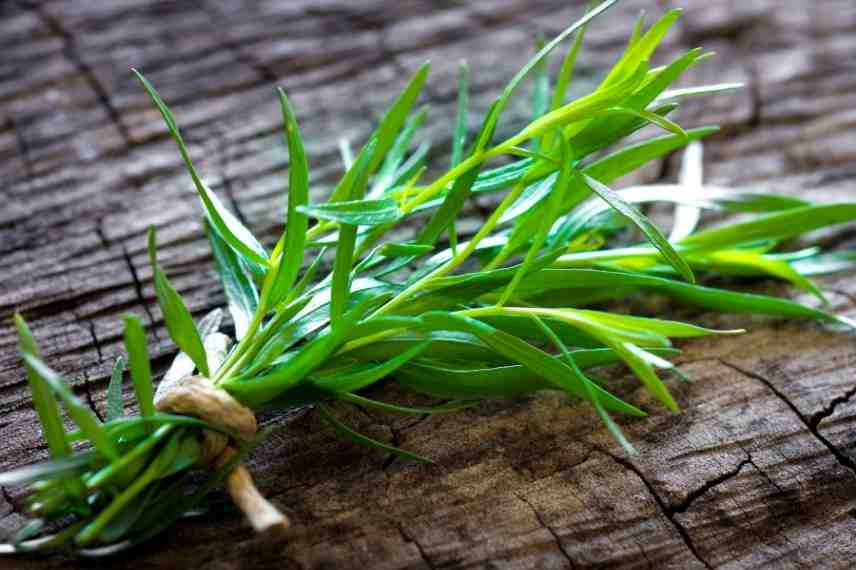
Tarragon, a prized aromatic herb in cooking
Which pot should I choose?
Tarragon quickly forms a neat bush of stems bearing aromatic leaves, taller than wide. It will reach 30 to 80 cm in height and about 40 cm across. In the garden, it will sometimes climb to over 1.30 m in height. It will not, however, reach such large dimensions as in open ground unless grown in a large pot. Choose a container of at least 20 cm diameter and 15 cm depth for 1 young tarragon plant. When your tarragon becomes bushy, repot into a larger 30 cm diameter pot to ensure good stability and optimal development. Choose a terracotta or plastic pot with a pierced base to facilitate water drainage. You can also plant it in a fairly deep planter.
Note that if you wish to plant several tarragon plants or combine them with other aromatic perennials such as mint, chives or parsley in the same container, space the young plants 40 cm all round, and choose pot size accordingly.
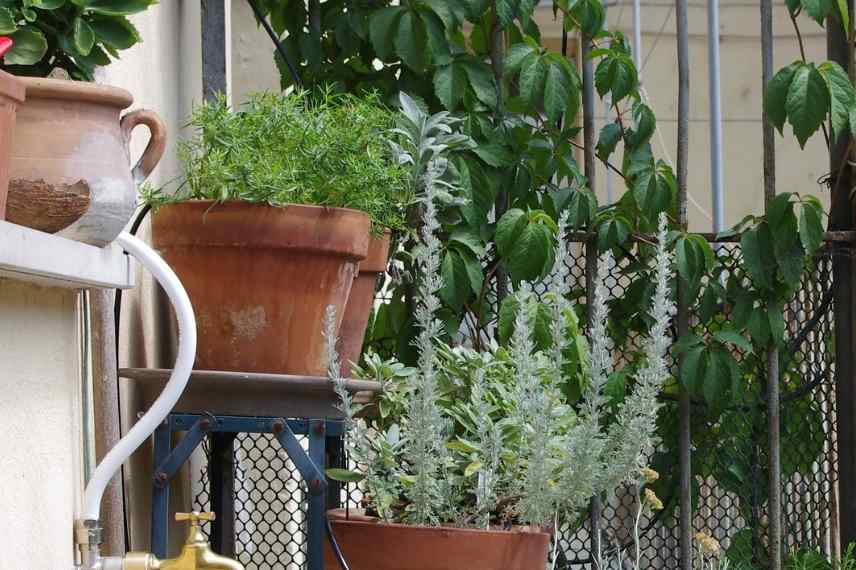
Tarragon pots on balcony (top) and Artemisia maritima (© Urza)
Read also
Tarragon: planting, sowing, harvestingWhich substrate should it be planted in?
Use rich potting compost for vegetable garden and aromatic plants that retains water well and will provide your tarragon with the essential elements for its good growth. Tarragon prefers a rich, well-drained medium that stays slightly moist but not waterlogged. You can lighten the compost with a little sand; it appreciates slightly sandy substrates.
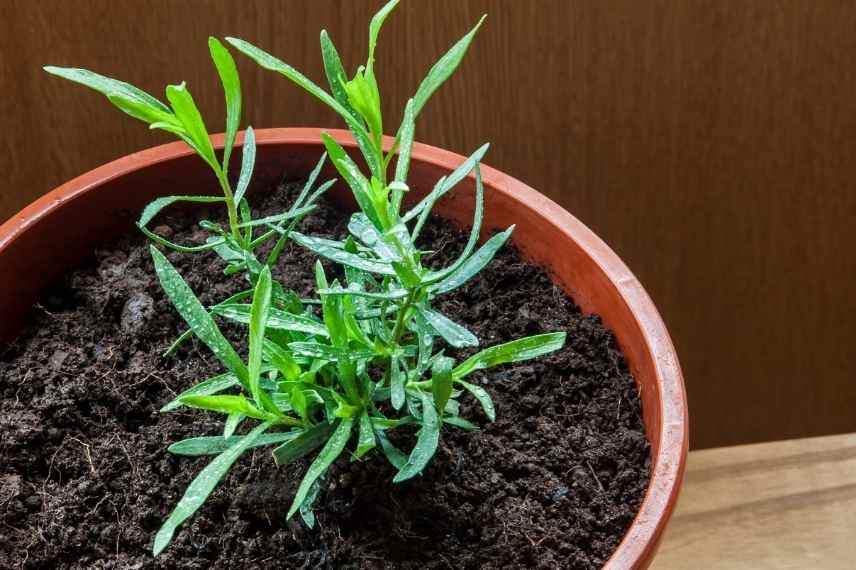
Young plant of tarragon
Discover other Tarragon
View all →Available in 2 sizes
Available in 1 sizes
Available in 1 sizes
Available in 1 sizes
Available in 1 sizes
Available in 1 sizes
Available in 1 sizes
Available in 1 sizes
When and how to plant tarragon?
If you opted to buy our plug plants or young tarragon plants, planting is done in spring, from April to June for almost immediate harvests and, over a long period, until October.
- Spread a layer of gravel or clay balls in the bottom of a pot or planter with drainage holes to ensure drainage
- Cover with potting compost
- Gently place the plug plant
- Fill in with remaining potting compost
- Water regularly to keep soil moist but do not let water stagnate in the saucer
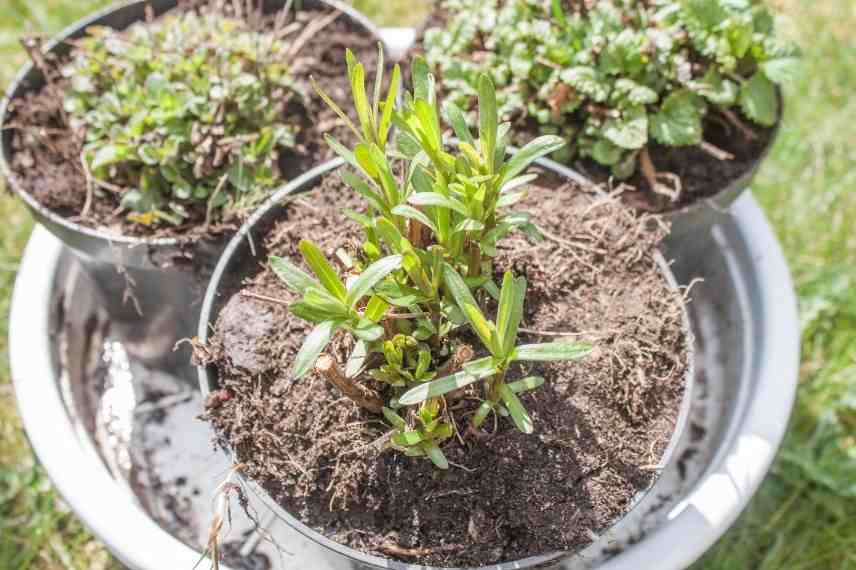
Read also
7 essential aromatic plantsWhen and how to sow tarragon in a pot?
Only Russian tarragon and Mexican tarragon are sown. The first can withstand negative temperatures at least down to -15°C, and can remain outside over winter, reshooting from the stump in spring, the second, rather less hardy, should be kept away from severe frosts. Harvest occurs 12 months after sowing for these tarragons. Sowing tarragon is useful if you wish to build a small collection and have enough space to store pots, otherwise better to opt for young tarragon plants. Tarragon seeds are sown from March onwards in the warmth of the house.
- Prepare one or more pots with drainage holes
- Spread clay balls at bottom
- Fill pot up to 2 cm from top with potting compost mixed with some sand
- Sow seeds 2 to 3 mm deep, spacing them 5 to 7 cm apart
- Cover with potting compost
- Water with very fine spray and keep moist during germination
- Thin out after germination to leave one healthy young plant per pot because tarragon develops rapidly
- Pinch young plants to encourage them to ramify
- Then water regularly to help establishment
What exposure does my tarragon need?
From May to September, put it outside in the sun if you can! Place your pot in a very sunny spot sheltered from heavy rain as tarragon loves warmth and sun, even intense sun, but not humidity. Indoors, place your potted tarragon behind a well-exposed window, sheltered from draughts.
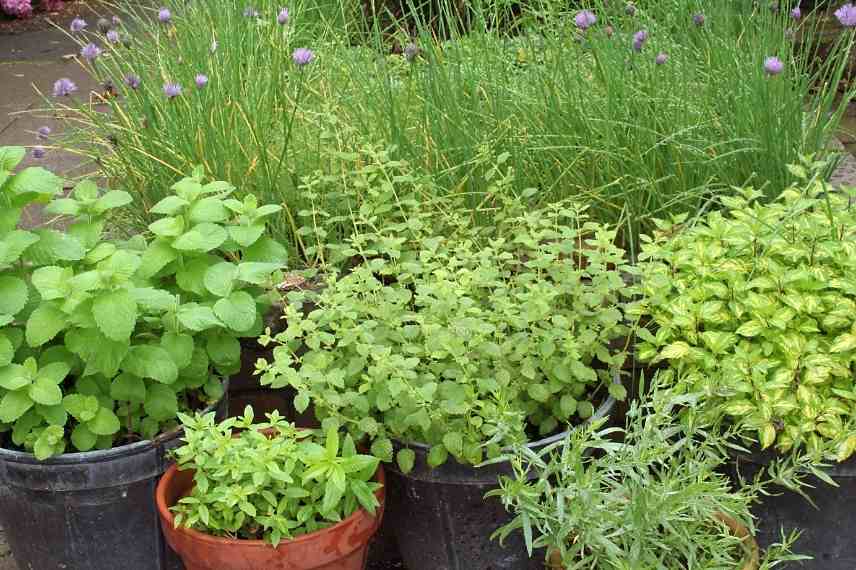
Potted tarragon on the terrace, alongside another tender plant, Aloysia citrodora (lemon verbena)
How to care for tarragon in a pot?
When and how to water?
Easy to care for, tarragon needs regular but moderate watering, even in summer. Water sparingly, about once a week. Do not let water stagnate in the saucer.
Which fertiliser to give it?
Although fertilising is not essential, it will appreciate occasional additions of vegetable fertiliser diluted in watering water during the season to stimulate leaf growth. At end of autumn, you can spread a handful of leaf mould on the stump.
How to cut tarragon in a pot?
Fresh leaves are harvested as needed. For tarragon kept indoors, harvest can be carried out throughout year. Harvest whole sprigs that are green and not in flower, and without stripping leaves, cutting them at the base with scissors or simply by hand. The more stems you harvest, the more vigorous your tarragon plant will be! So cut stems regularly and remove small yellowish flowers that appear in summer in the axil of leaves, to encourage new leaf growth.
When and how to repot?
After one year, your tarragon will have absorbed all nutrients from its substrate. It will no longer be nourishing enough, and in potted plants substrate is depleted more quickly than in open ground. Repotting is recommended in spring, into a container with a slightly larger diameter. Replant it in vegetable potting compost that is brand-new, light and well-draining. You can also simply top-dress, which consists of replacing surface compost with fresh compost.
What should I do with my tarragon in winter?
Common tarragon is frost-tender; if you want to keep it year-round, protect it from frost. In regions with harsh winters, the ideal is therefore to grow it in a pot, bring it out onto the terrace or balcony for the growing season and bring it indoors before winter frosts, so you can keep it from one year to the next.
In regions with mild winters, pots of tarragon can remain outside: it’s a perennial plant, it will die back at the first frosts and regrow from the stump in spring. To help it get through winter without suffering too much, in autumn, mulch the stump with a layer of dead leaves and, if necessary, protect the pot with cardboard or bubble wrap.
To learn more
- Our complete guide: Tarragon: plant, sow, harvest
- Our tips for planting our vegetable plug plants successfully!
- Succeed in sowing herb seeds with our video tips!
- Subscribe!
- Contents








































Comments